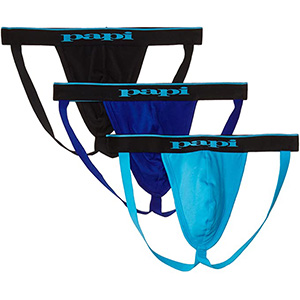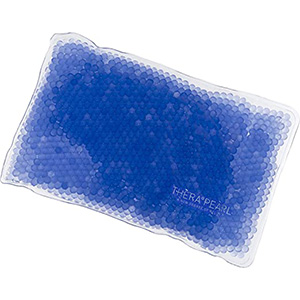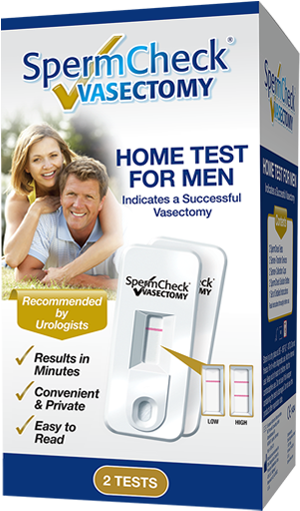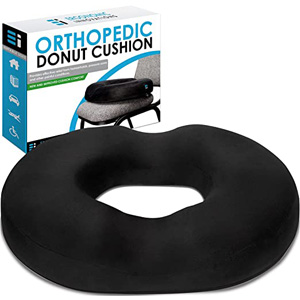Intro
Before telling my story, I want to thank Dave and many of the people listed on this website for their support. During my bout with Post-Vasectomy Pain (PVP) Syndrome, I’ve corresponded with several people here, including Adam Yahre, Lorenzo Panarella, Greg Fournier, Steve Joiner, and others. Their encouragement, advice, and support have helped me tremendously since my battle with PVP began. I cannot thank them enough and, though not a particularly religious person, I pray for them in their battles with PVP.
My story
To summarize my story, my vasectomy in March 2005, has resulted in severe scrotal and inguinal pain has impacted every aspect of my life: the constant pain has hindered me in my role as an active and happy father, hampered my job performance, limited my exercise and leisure activities, and virtually eliminated sexual activities with my wife of 16 years, just to name a few effects. I took a major step yesterday by undergoing a vasovasostomy (reversal). Here’s how it all began:
As I approached the age of 40 in late 2004, my wife and I had concluded that we had completed our family and had no desire for more children beyond our three daughters, then ages 11, 10, and 7. Like many couples, we were looking for permanent, more reliable birth control. Like so many other “victims” of the feminist world view, we concluded that it was somehow my duty as the man to have a vasectomy.
The vasectomy
My vasectomy research consisted of speaking with my father and father-in-law who both had had vasectomies many years ago and, to my knowledge, never complained or had complications. So, seeing their apparent success, I requested a urological referral from my PCP and was referred to Dr. Michael Barkoukis. I had a pre-vasectomy consult with Dr. Barkoukis and was duly impressed with him. We shared some mutual friends and had both attended college in upstate New York. So, I scheduled my vasectomy for a week later, Friday, March 11, 2005, a date that will be firmly impressed in my mind forever.
On March 11, I underwent a closed-end vasectomy with a scalpel. The entire procedure, including the pre-op prep, took about 30 minutes. Other than the pin-prick from the local anesthetic shots, I felt virtually no pain or discomfort. The procedure went as I had expected, and I had no recovery complications. I lied on the sofa all weekend using ice and occasional pain pills as instructed, but I recovered quickly. I returned to work the following Monday and even coached my daughters’ indoor softball practice a night later.
While others’ PVP stories seem to start with the vasectomy itself, my initial vasectomy experience was truly no big deal. I returned to my normal jogging routine of 2-3 miles 3 times per week by mid-April and mild weight lifting by early May. By mid-May, I also returned to my fair-weather bicycling regimen of 75-100 miles per week. By this time, all thoughts of the vasectomy were gone, and my wife and I were enjoying our sex life without birth control pills or condoms.
Things changed suddenly in late October 2005, about 7-1/2 months after the vasectomy. Without warning, I began to feel a stinging pain on the tip of my left vas (testicle side), and an incredibly sore left the inguinal canal, much like the feeling of a pulled groin muscle, though higher. The scrotal pain intensified during sexual arousal, and I experienced sharp, shooting waves of pain following ejaculation. Needless to say, lovemaking fell off sharply and has remained at a low level to date.
I immediately saw my PCP, and he suggested I was in the process of developing a hernia. The pains became worse and constant over the next week, and I became convinced that they were related to the vasectomy. So, I went back to see Dr. Barkoukis and began the slow, time-consuming, expensive, and often frustrating treatment for what I now know is Post-Vasectomy Pain (PVP) Syndrome.
Dr. Barkoukis took me through a conservative and responsible treatment plan that, over the next 2 months, consisted of antibiotics, anti-inflammatories, a Pelvic CT Scan, a scrotal ultrasound, and an IVP. When the drugs provided no relief and the tests all showed normal (other than revealing a small kidney stone which I passed shortly thereafter), Dr. Barkoukis suggested that the granulomas at my vas ends might need to be removed. Worried that they would simply grow back, I asked about the possibility of a vasectomy reversal, but he said that he does not do vasectomy reversals to resolve pain. He never used the phrase “Post-Vasectomy Pain Syndrome,” but at least acknowledged that the vasectomy could be at the root of my problem.
In early December, I began experiencing similar pains on the right side of my scrotum and right inguinal canal. With my symptoms worsening and a urologist unwilling to consider the reversal option, I decided to get a 2nd and 3rd opinion from urologists who would consider all options.
In late December 2005, I saw Dr. Allen Seftel at Cleveland’s University Hospital Health System (UHHS). If you Google “Post Vasectomy Pain”, you’ll see Dr. Seftel’s name featured prominently. Dr. Seftel quickly discovered the painful granulomas at the tip of each vas and, like Dr. Barkoukis, indicated they might need to be removed. Dr. Seftel had me undergo a lower lumber MRI and a semen culture, both of which later showed normal results. With testing exhausted, Dr. Seftel suggested treatment for PVP through UHHS’ pain management clinic before considering surgical options. The pain clinic prescribed Neurontin and suggested a series of anesthetic/steroidal injections (nerve blocks). I decided to try the Neurontin, but seek a 3rd opinion before undergoing the injections.
In early February 2006, I saw Dr. Anthony Thomas at the Cleveland Clinic. Dr. Thomas has published research on the treatment of PVP with a reversal. Seeing the litany of test results and failure of traditional medications, Dr. Thomas quickly described that I was experiencing PVP and, like Dr. Seftel, referred me to the Cleveland Clinic’s pain management clinic for nerve blocks prior to attempting surgery. He did state, however, that he would recommend a reversal rather than simple excision of the granulomas. This recommendation made more sense to me and, while I greatly respect Drs. Barkoukis and Seftel and highly recommend them, I felt most comfortable with the direction charted by Dr. Thomas.
All this time, the scrotal and inguinal canal pains consumed most of my waking thoughts. I was forced to cease all forms of exercise, and I struggled to get through each day at work. The act of sitting upright caused excruciating pain, and extended-standing was impossible. I was forced to use ice packs each evening. Sex became a distant memory.
Through the Cleveland Clinic’s pain management center, I began seeing a physical therapist. She prescribed a series of stretching, strengthening exercises, electrical stimulation, light therapy, and icing for the groin, hips, and legs. The combination of physical therapy and Neurontin was simply not providing enough relief, so I decided to undergo the nerve block injections in mid-March. They told me that to expect immediate relief, so I was disappointed when I felt the same for a few weeks; however, in early April, the inguinal canal pains began to subside and by late April, they were completely gone. I credit the combination of nerve block injections, PT, and warm weather. I even began to jog again, now that the pains were restricted to the scrotum, although any exertion really spiked the pain level.
In April, with the pains now contained to the scrotum and really focused on the upper ends of each vas, Dr. Thomas and I decided that granuloma removal and vasectomy reversal was the best option for the long-term elimination of my PVP. As expected, my insurer initially declined coverage for vasovasostomy because it is considered elective surgery. Dr. Thomas graciously assisted me with my appeal, and we provided the insurer with mounds of research detailing the benefits of vasovasostomy for PVP. To my great surprise, I received authorization for coverage of the reversal and scheduled the procedure for May 30th.
Unfortunately, my annual bout with seasonal allergies and sinus problems hit me around May 25th, and I had to postpone the reconstructive surgery until June 20th, yesterday.
The reversal
The reversal surgery went smoothly and as expected. I arrived for pre-op screening and preparation at 8:00 am. I walked into the OR at about 9:15 am, and the surgery began at around 9:30 am. I awoke from the general anesthesia a little after 1:00 pm. I felt (and still feel today) some general post-operative soreness, especially at the incision sites, and the vas’s themselves are tender. I would characterize my pain level at slightly worse than what I recall from the vasectomy, but quite tolerable and certainly less than my worst PVP days pre-reversal.
After the surgery, Dr. Thomas told me that my vas ends appeared to have been leaking sperm which, apparently, led to the formation of the granulomas. He told me that the reconnection went smoothly and further commented that I “have a LOT of highly active sperm.” My wife and I left the surgery center at about 3:00 pm.
It’s way too early to know whether the reversal will provide me with the PVP cure I sought. There’s just too much post-operative soreness (now 24 hours post-op) to know whether the PVP-related pain will disappear.
I am convinced, however, that this was the best course of action for me. I had tried all available conservative therapies. My personal opinion is that each man gets one shot at vasectomy and, if it doesn’t take, the best course of action is to put things back together.
I’m about 9 days post-reversal. The surgery specific pain seems to have mostly subsided… I no longer feel massive pain at the reconnection and incision sites, but I definitely still feel the ache that I attributed to either an autoimmune response or epididymal congestion. I’m not drawing any conclusions, yet, as even those with successful reversals have told me that it can take a few months for things to settle down.
October 22, 2006 update
I wanted to post an update to my story. It’s been nearly 4 months since my reversal.
I’m pleased to report that I’ve been making good progress toward a return to normalcy from PVP. For the first 2-3 months post-reversal, I was still in a great deal of pain. I’m sure some of that, early on, was simply due to the surgery. In late September, roughly 3 months post-reversal, I noticed a consistent drop in my pain levels. Since then, things have only gotten better. Now, on a typical day, I would say that I’m pain-free at least half of the time. Long drives or flights can still create some discomfort, but it’s much more tolerable than the pre-reversal PVP symptoms I experienced. And, the recovery time is much shorter from those few periodic bouts of discomfort.
In addition, I’m pleased to report that sexual arousal and ejaculation are no longer painful and has actually become quite enjoyable again. I still have some residual anxiety from the massive pain that sex brought on pre-reversal, but I think that will go away with time.
Two weeks ago, I even returned to a full workout regimen of jogging, stationary bicycling (recumbent, of course), and moderate weight lifting.
Having corresponded with so many other PVP victims, I’m hesitant to declare victory. I’m cautiously optimistic that my worst PVP days are behind me and that the reversal will continue to provide pain relief. I certainly hope to be an inspiration to others in my situation, too.
March 2007 update
On a positive note, I want to give you an update on my condition.
I’m now at 8-9 months post-reversal and have been living 95-100% pain-free since last October/November timeframe. I’ve been able to resume a normal, active healthy lifestyle and finally shed 10 of the 15 lbs that I gained during my sedentary period of PVP. At this point, I liken my condition to that of any other body part with a previous injury. My scrotum is a bit sensitive to extended sitting, pressure, or activity, but any “pain” these days is a small fraction of the pain I experienced pre-reversal. I am very pleased and thankful for the recovery, but feel it is a bittersweet victory when I read about men like Robert and other PVP victims that have not been able to recover as well. I pray every day for all the men that continue to suffer from this hideous disease called PVP.
Submitted by Scott
Recommended products for recovery
We only recommend products we think are useful for our readers. If you make a purchase, we may earn a small commission. JockstrapsPapi Men’s Cotton Jock Strap 3-Pack
JockstrapsPapi Men’s Cotton Jock Strap 3-Pack Ice packsTheraPearl Ice Pack with Gel Beads
Ice packsTheraPearl Ice Pack with Gel Beads Home Vasectomy TestSpermCheck Vasectomy Test Kit
Home Vasectomy TestSpermCheck Vasectomy Test Kit Donut-shaped pillowErgonomic Innovations Orthopaedic Seat
Donut-shaped pillowErgonomic Innovations Orthopaedic Seat